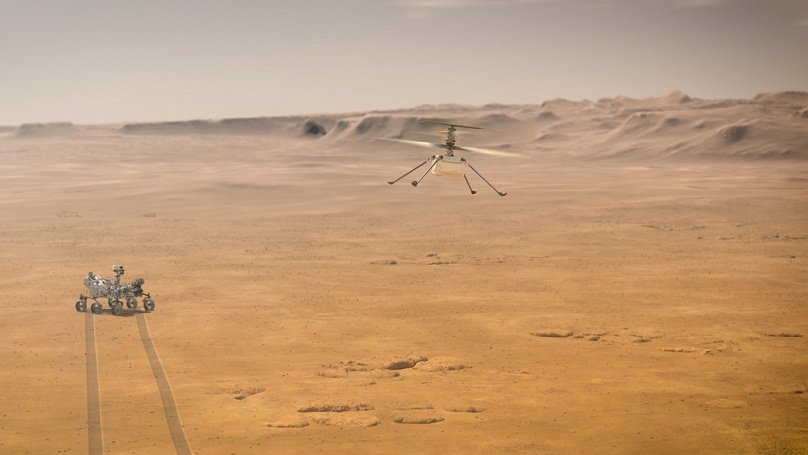NASA creates history, flies helicopter on Mars, first for another planet CAPE
| Date :20-Apr-2021 |

CANAVERAL (US) :
NASA’S experimental Mars helicopter rose from the dusty red surface into the thin air Monday, achieving the first powered, controlled flight on another planet. The triumph was hailed as a Wright Brothers moment. The mini 4-pound (1.8-kg) copter named Ingenuity, in fact, carried a bit of wing fabric from the 1903 Wright Flyer, which made similar history at Kitty Hawk, North Carolina. “We can now say that human beings have flown a rotorcraft on another planet,” project manager MiMi Aung announced to her team. Flight controllers in California confirmed Ingenuity’s brief hop after receiving data via the Perseverance rover, which stood watch more than 200 feet (65 metres) away. Ingenuity hitched a ride to Mars on Perseverance, clinging to the rover’s belly upon their arrival in an ancient river delta in February.
The $85 million helicopter demo was considered high risk, yet high reward. “Each world gets only one first flight,” project manager MiMi Aung noted earlier this month. Speaking on a NASA webcast early Monday, she called it the “ultimate dream.” Aung and her team had to wait more than three excruciating hours before learning whether the pre-programmed flight had succeeded 178 million miles (287 million kilometres) away.
Adding to their anxiety: A software error prevented the helicopter from lifting off a week earlier and had engineers scrambling to come up with a fix. Applause, cheers and laughter erupted in the operations centre when success was finally declared. There was even more when the first black and white photo appeared on the screens, showing Ingenuity’s shadow as it hovered above the surface of Mars. Next came the stunning colour images of the helicopter descending back to the surface, taken by Perseverance, resulting in even more applause. Details were initially sparse, but NASA had been aiming for a 40-second flight.
The helicopter was supposed to rise 10 feet (3 metres), hover for up to 30 seconds, then pivot toward the rover and land close to where it took off. To accomplish all that, the helicopter’s twin, counter-rotating rotor blades needed to spin at 2,500 revolutions per minute — five times faster than on Earth. With an atmosphere just 1 per cent the thickness of Earth’s, engineers had to build a helicopter light enough — with blades spinning fast enough — to generate this otherworldy lift. At the same time, it had to be sturdy enough to withstand the Martian wind and extreme cold. More than six years in the making, Ingenuity is a barebones 1.6 feet (0.5 metres) tall, a spindly four-legged chopper.